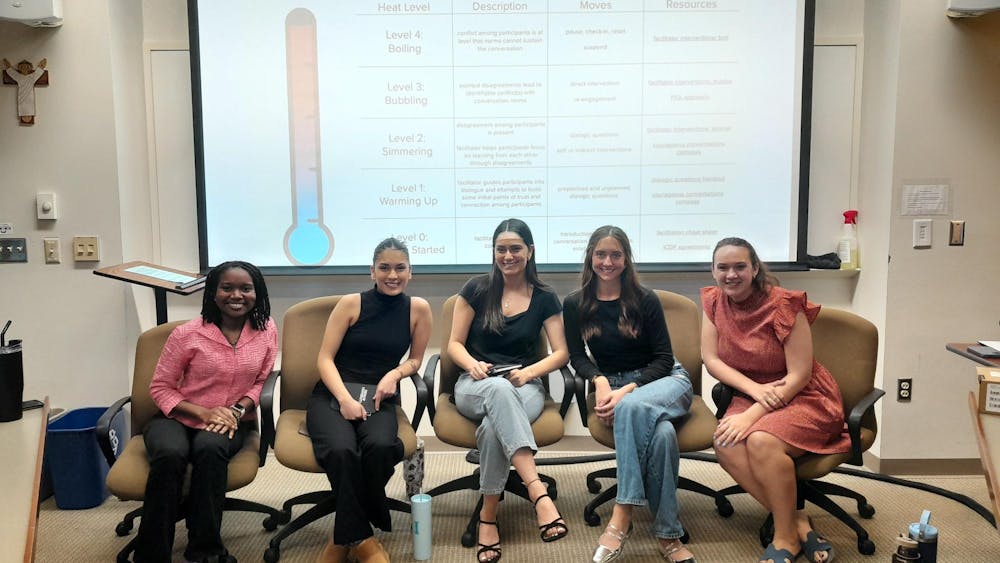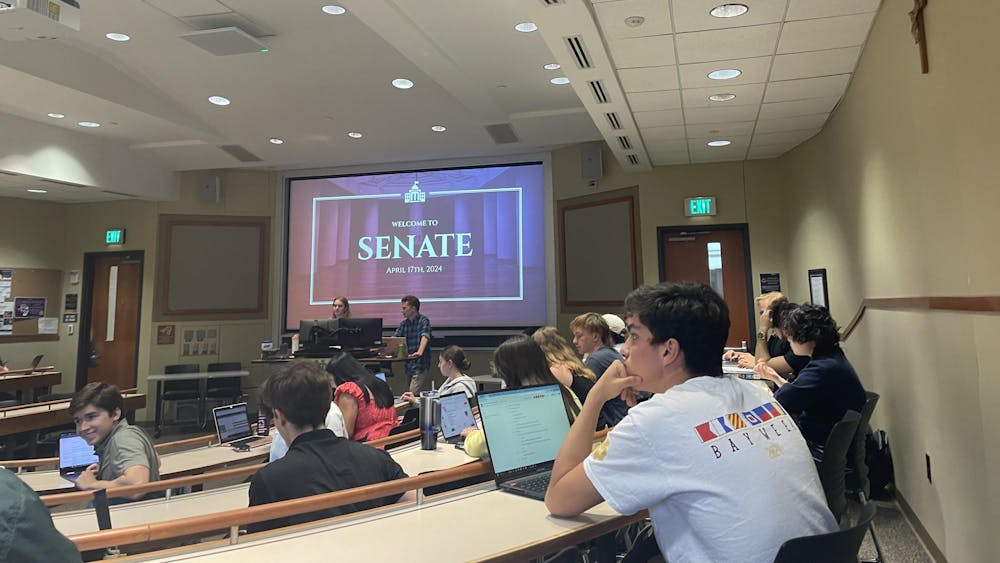American author, essayist and social critic Peter Sacks examined the relationship between class and its influence on the American college experience, as well as colleges' current relationship with social mobility, in a lecture Thursday night.
“The American Dream is on life support,” Sacks said in the lecture, titled “Climbing the Class Ladder: Do college and universities help — or do they stand in the way?”
Though “we often talk about American higher education as being this meritocracy … [and] we like to think of our schools, colleges and universities as great equalizers,” Sacks said, this is not the case in a modern America where “advantages and disadvantages of class undergird so much of what transpires in higher education.”
Sacks said despite the U.S. commonly being thought of as a land with equality of opportunity for all, this status is undermined by the country’s system of capitalism, run by the rule of the survival of the fittest. There is a class divide in education, he said, and colleges and universities are doing a poor job of bridging it.
“We live in a democratic society, but it has become one where outcomes are too heavily influenced by money and power, and equal educational opportunity is not immune to the influences of money and power,” Sacks said. “When we talk about the class divide in education, those who benefit from the existing rules of the game might feel threatened. Out in the open, the vastly unequal educational opportunity is exposed.”
Sacks said colleges are not doing a good enough job reaching and aiding economically disadvantaged students, as only 21 percent of “college-qualified” students from low-income families eventually complete a bachelor’s degree, and roughly six million college-qualified students do not attend college due to financial restraints alone. Furthermore, Sacks said, while recruited athletes, legacies and under-represented minorities receive a substantial boost in the admissions process, low-income students are given little to no advantage.
“Our exclusionary way of running our educational system contradicts our founding ideologies, and so we can’t come out and admit that exclusion on class lines is the primary way we do things,” he said. “ … America is not the land of equal opportunity. So we see that many academic institutions aren’t welcoming places for students from families of low and modest incomes.”
“That begs the obvious question: Are colleges and universities the right place to climb the social and economic ladder, or are there other ways to do this?” Sacks said.
In fact, he said, there might be better ways, or ways that serve some people better than others. The middle class has declined precipitously since 1979, Sacks said, and that decline is linked with the successful assault on unions by large corporate interests.
“A recent paper [was] released by the National Bureau of Economic Research in which the researchers estimated the effects on intergenerational economic mobility from the decline of unionism in the United States. The research found that parents’ unionism has had a significant effect on their child’s well-being,” Sacks said.
“The adult children of unionized parents earn higher labor income compared to the offspring of non-union parents, and the children of unionized parents often obtain higher education and better health outcomes compared to those whose parents were not unionized.”
These intergenerational benefits from unionization are more powerful for poorer and lesser-educated parents and tend to spill over into the broader community, Sacks said. The result is that although collective action among workers has come under attack across the U.S., there is a proven way through unionization to promote economic mobility beyond college.
Sacks also said there are those who claim too many people are going to college. He said critics of higher education deny a link between higher education subsidies and economic growth, as well as that public support of higher education in the U.S. increases economic equality.
“These critics of higher education have essentially argued that colleges and universities are useless as a social or economic investment,” Sacks said. “Higher education is both a public good, and investment into it is essential.”
Sacks said those born at an economic disadvantage and who drop out of high school have only a one-percent chance of reaching the top income quartile by the time they are 40. Additionally educational attainment is highly correlated with reduced unemployment, public assistance, smoking rates and poverty rates, as well as increased voting rates and volunteerism.
Sacks closed by saying the reduction of subsidies for public institutions has caused some to turn private and has created a situation where one’s ability to pay determines whether one deserves a college education. He said students from families who have the ability to pay for admissions slots at universities could become a new, self-perpetuating aristocracy.
“At the dinner table, in the real-world, equal opportunity means that parents want their kids to have opportunities they never had. … We have what we have of because of sacrifices and investments in human capital past generations made for us,” Sacks said.
Sacks’ lecture was the keynote address for the 2015 AnBryce Forum, which according to its website is “meant to encourage a campus-wide dialogue on the means by which a range of actors attain access to opportunity in the complex landscape of the American 21st century.”













